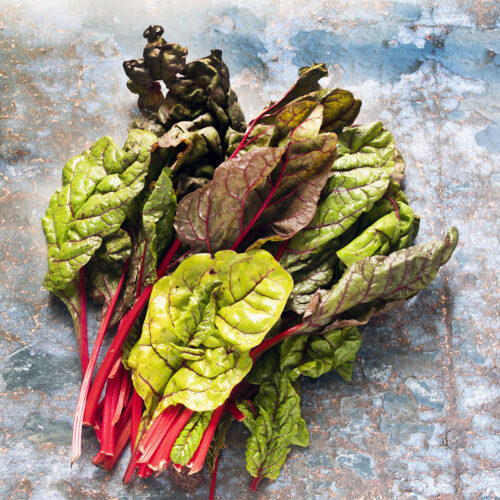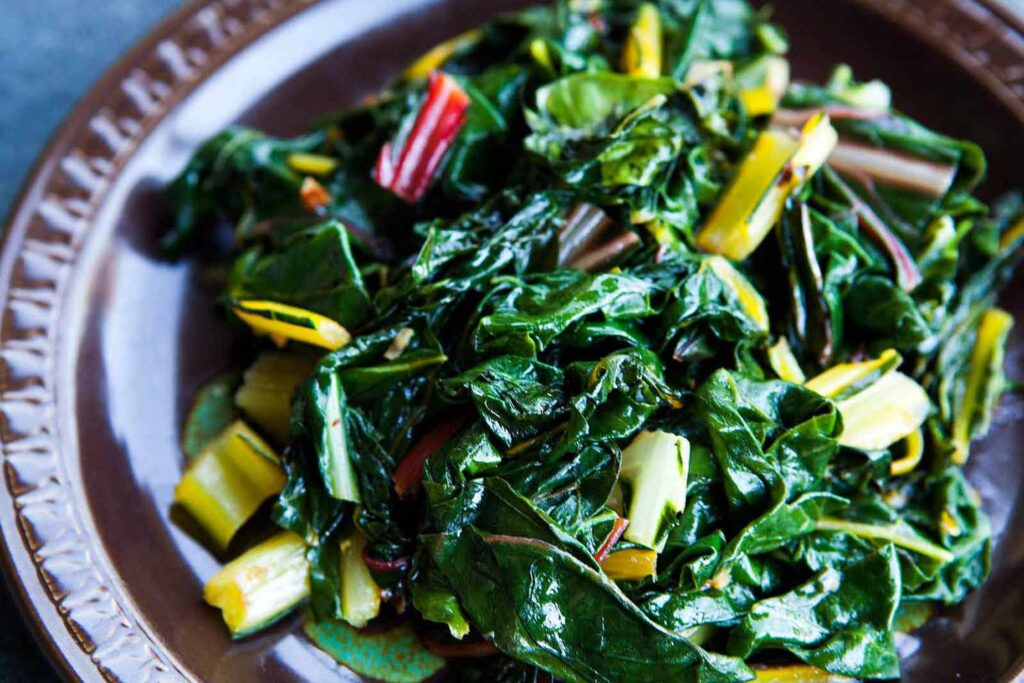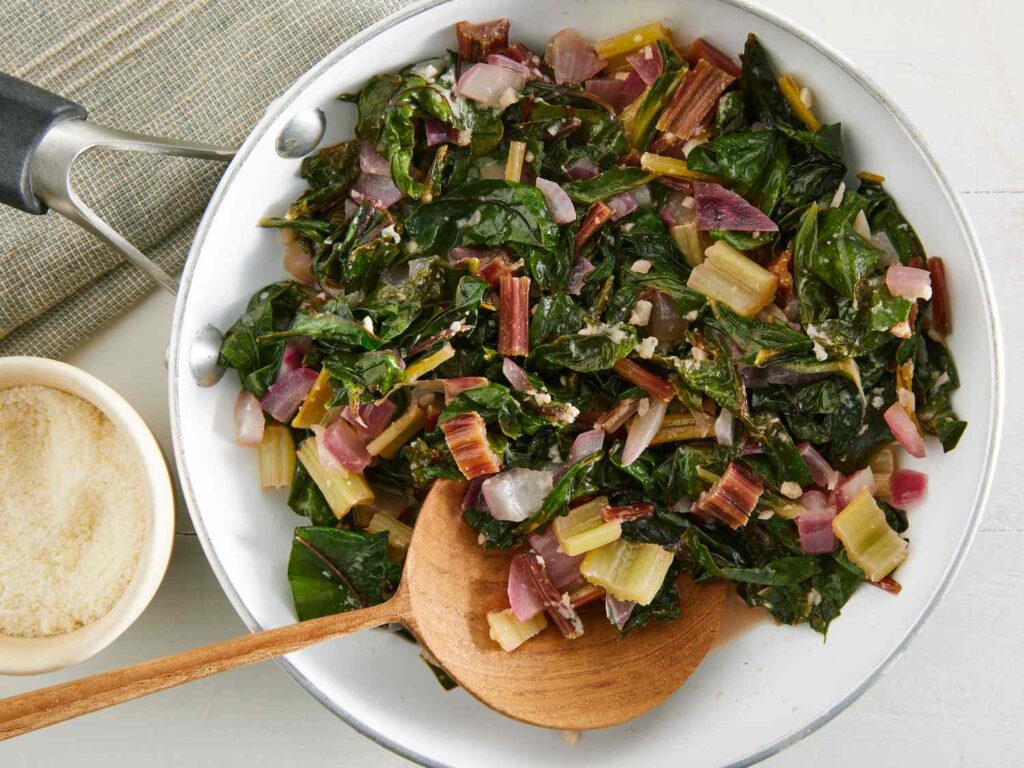How to Cook Chard – Learn how to cook Chard, with its vibrant colors and earthy flavor, is a versatile leafy green that deserves a place in every kitchen. Whether you’re a seasoned chef or a beginner in the culinary world, mastering the art of cooking chard can elevate your dishes to new heights. In this comprehensive guide, we’ll explore everything you need to know about selecting, preparing, and cooking chard to perfection. From sautéing and braising to incorporating it into soups and salads, we’ll cover various cooking methods and provide delicious recipes to inspire your culinary creativity.

Before diving into the cooking process, it’s essential to understand the basics of chard. Also known as Swiss chard or silverbeet, chard belongs to the same family as beets and spinach. It comes in several varieties, including rainbow chard, with vibrant stems ranging from red to yellow to orange. Chard is packed with essential nutrients like vitamins A, C, and K, as well as minerals like magnesium and potassium. When selecting chard, look for fresh, vibrant leaves without any wilting or discoloration.
Learn More Recipe: How to Cook Spinach
Cooking chard is quite simple and versatile. Here’s a basic recipe for chard:
Ingredients:
1 bunch of chard
2 cloves of garlic, minced
1 tablespoon olive oil or butter
Salt and pepper to taste
Optional: lemon juice, red pepper flakes, grated Parmesan cheeseInstructions:
- Wash the chard thoroughly under cold water. Trim off any tough stems. You can chop the stems into smaller pieces and cook them along with the leaves, or save them for another use.
- Roll up the chard leaves and slice them thinly.
- Heat olive oil or butter in a large skillet over medium heat.
- Add minced garlic and cook for about 1 minute until fragrant.
- Add the sliced chard leaves to the skillet. Stir well to coat the leaves with the garlic and oil.
- Cook the chard for about 5-7 minutes, stirring occasionally, until it wilts and becomes tender. If you’re using chard stems, add them to the skillet a few minutes before the leaves.
- Season with salt and pepper to taste. You can also add a squeeze of lemon juice for brightness and a pinch of red pepper flakes for heat, if desired.
- Once the chard is cooked to your liking, remove it from the heat.
- Serve the sautéed chard as a side dish or incorporate it into other recipes. It pairs well with grilled meats, pasta dishes, or as a topping for pizzas.

Cooking Methods for Chard
Chard can be cooked in a variety of ways, each bringing out its unique flavor and texture. One popular method is sautéing, which involves cooking the chard in a hot pan with a bit of olive oil and garlic until wilted. You can also braise chard by simmering it in a flavorful liquid, such as broth or wine, until tender. For a lighter option, try steaming chard, which preserves its crisp texture and vibrant color.
Learn More Recipe: How To Cook Collard Greens
Conclusion
Cooking chard is not only nutritious but also delicious, adding depth and flavor to a wide range of dishes. Whether you’re sautéing it as a side dish or incorporating it into your favorite recipes, chard is sure to become a staple in your kitchen. With the tips and recipes provided in this guide, you’ll be well-equipped to cook chard like a pro and impress your friends and family with your culinary prowess. So don’t be afraid to get creative and experiment with this versatile leafy green—it’s time to unlock its full potential!

FAQ
- How do I select fresh chard at the grocery store or farmer’s market?
When selecting chard, look for leaves that are vibrant and crisp, without any wilting or discoloration. The stems should be firm and brightly colored. Avoid chard with yellow or brown spots, as this may indicate that it’s past its prime.
- Do I need to wash chard before cooking it?
Yes, it’s essential to wash chard before cooking to remove any dirt or debris that may be clinging to the leaves. Rinse the leaves thoroughly under cold water and pat them dry with a clean kitchen towel or paper towels.
- What parts of the chard should I use in cooking?
Both the leaves and stems of chard are edible and can be used in cooking. However, the stems are tougher and take longer to cook, so you may want to cook them separately or chop them into smaller pieces to ensure even cooking.
- How should I store chard to keep it fresh?
To prolong the freshness of chard, remove any rubber bands or ties from the bunch and place it in a plastic bag or container lined with paper towels. Store it in the crisper drawer of your refrigerator and use it within a few days for the best flavor and texture.
- Can I freeze chard for later use?
Yes, you can freeze chard for later use. Start by blanching the leaves in boiling water for a few minutes, then immediately transfer them to an ice bath to stop the cooking process. Once cooled, drain the chard and pat it dry, then pack it into airtight containers or freezer bags and freeze for up to several months.
- What are some seasoning and flavoring options for cooking chard?
Chard has a slightly earthy flavor that pairs well with a variety of seasonings and flavorings. Some popular options include garlic, onions, lemon juice, balsamic vinegar, red pepper flakes, and Parmesan cheese. Experiment with different combinations to find your favorite flavor profile.
- Can I eat chard raw in salads?
Yes, chard can be eaten raw in salads. The leaves have a slightly bitter flavor that adds depth to salads when combined with other ingredients like fresh vegetables, nuts, fruits, and a flavorful dressing. Just be sure to wash the leaves thoroughly before using them raw.
- Are there any health benefits to eating chard?
Yes, chard is packed with essential nutrients like vitamins A, C, and K, as well as minerals like magnesium and potassium. It’s also low in calories and high in fiber, making it a nutritious addition to any diet. Incorporating chard into your meals can help support overall health and well-being.
Learn More Recipe: How to Cook Spinach
[…] Learn More Recipe: How to Cook Chard […]
[…] Learn More Recipe: How to Cook Chard […]